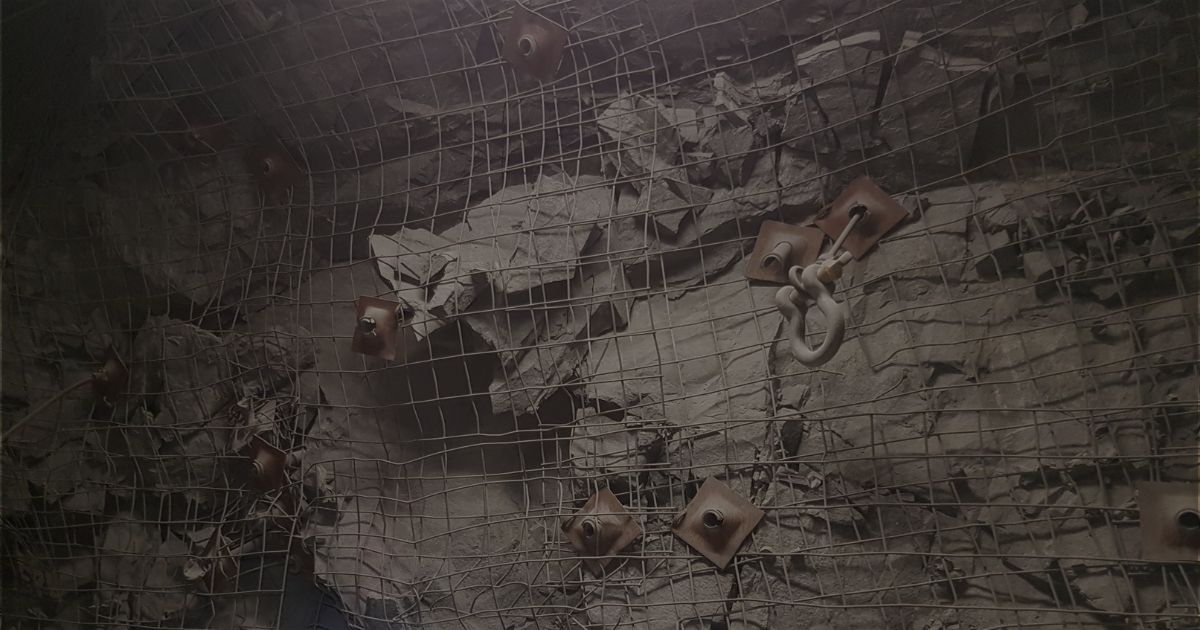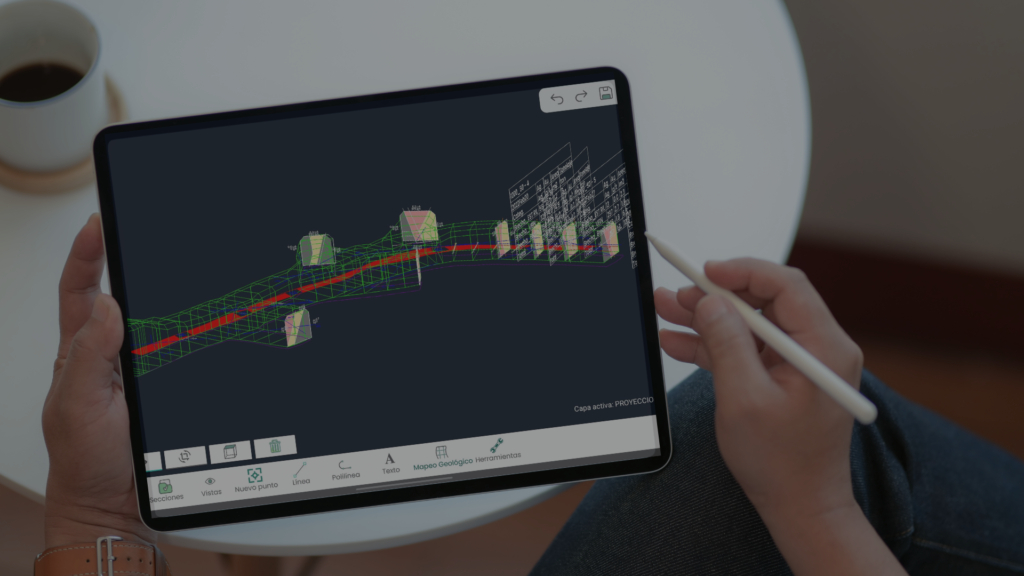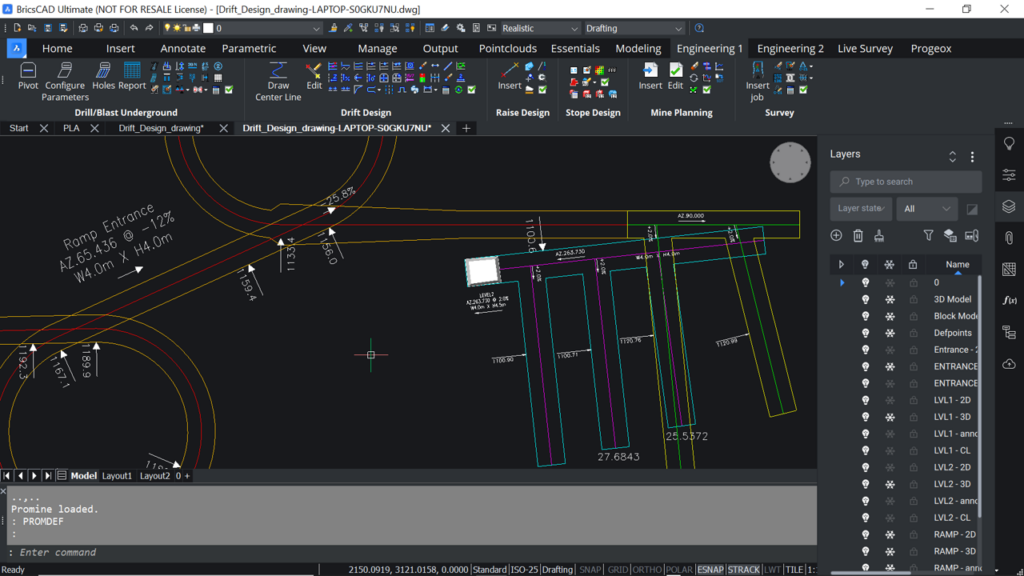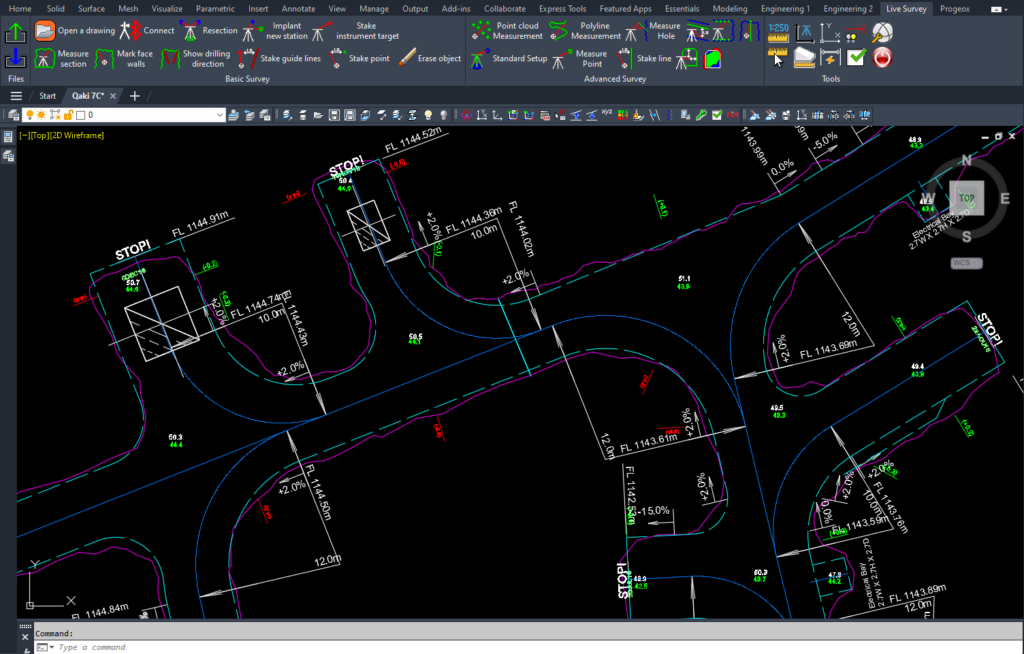A quick google search about this topic leads to results such as: long holes sublevel stoping, transverse longhole stoping, long hole shrinkage stoping method, sublevel open stoping, and others. All these results resume to Shrinkage stoping and long hole stoping which happen to be the most used methods in the mining industry nowadays.
Shrinkage stoping is used widely on steep ore bodies (70⁰-90⁰) and the holes depart from the bottom upwards, it could be backfilled or left empty depending on different factors.
Longhole stoping is a very popular method in underground mining for blasting a sequence of stopes in metalliferous mines. The holes are drilled according to a predetermined pattern designed by a mining engineer. This method is one of the most productive ones and covers a variety of ore thicknesses and dips (0 – 90⁰). This method unavoidable adds dilution (20%), but it offers advantages such as very high productivity and efficiency because the blasted rock falls into a supported drawpoint that is excavated below the stope bottom, and which allows for the removal of the blasted rock using remote control LHD or rail cars for longer transport. The method also offers mid-range mining cost and low hazardous conditions (easily ventilated).
When it comes to modeling and putting this on paper there are many variables that are determinant on every single stage of the method (from planning the drill and blast patterns, to scanning the cavity and using different software for modeling representative solids in 3D). Currently, there are many software solutions in the industry for these different stages, but most of them do not encompass all the needs of a mining engineer.
There are three main drill patters that are widely used by mining engineers for sublevel stopping: ring drilling, fan drilling and parallel drilling. These popular patterns can all be easily modeled with the use of Promine’s “Drill and Blast Underground” module.
Once the blast sequency has been determined, it is time to blast! Once blasted we remove the rock and send it to the milling plant to extract the material of interest.
Mining professionals depend on specific technologies through every single stage of development and production of a mine. The need for these specific technologies creates a particular challenge for software and hardware companies which must quickly adjust to the changing needs of the mining professionals. The mining industry also must constantly be adapting to new developments in mining methods, improved technologies and ever more demanding professionals. Whether we are users or developers, we all face problems that range from the simple to the complex and some of these problems will require the expertise of knowledgeable mining professionals that are part of a specific niche (programming, mining, geology, survey areas or others).
When working as users during the planning of a drill pattern, we want everything to be simple and straightforward. As users in an ideal world the interface of our mining software would contain all the features that would allow us to do anything, but as developers, we are trying to deliver only what clients need for their planning so unavoidably, the software will have certain limitations on the interface.
As a software company we get many requests to integrate new features and improvement into our program and we are very happy to deliver all of these to our clients. For example, a software solution was completely integrated in our interface to allow the users to scan on real time the relative susceptibility and EM conductivity of the rock in a production hole by using a probe (SSW system from Instrumentation GDD). The results are then displayed on a drawing of a drill pattern design.

Image: Real time survey generated in Promine-AutoCAD using GDD SSW instrument.
Our senior software developer, Pier-Alex Côté-Sarrazin, has commented that “The challenges on programming certain new features for external applications in our interface can vary”. These challenges range from having poor content documentation for the application, to understanding how to establish communication from the hardware to the software. Additional challenges are understanding which are the communication ports being used by the target application and the simple fact that an old technology is no longer compatible with a new technology, something we have all experienced with devices such as a very old iPod that you want to synchronize with the most recent version of iTunes and are not able to do it.
Some of our clients’ requests have involved very particular challenges and changes that our software department has been ready and eager to tackle. Mining software companies such as Promine are constantly developing new solutions to rise to the challenges posed by ever evolving mining methods. We adapt to these market needs by applying state of the art technology and the latest know-how when it comes to developing the solutions our customers expect from us.
References:
- Himanshu, V. K. (n.d.). Design of stoping parameters and support system for longhole stoping method by numerical modelling. Retrieved from https://www.researchgate.net/publication/317615525_Design_of_stoping_parameters_and_support_system_for_longhole_stoping_method_by_numerical_modelling
- Coulthard, M. (n.d.). Applications of numerical modelling in underground mining and construction. Retrieved from https://link.springer.com/article/10.1023/A:1008951216602
- Stoping. (2021, February 08). Retrieved from https://en.wikipedia.org/wiki/Stoping#:~:text=Long hole stoping as the,(0 – 90 degree)
- Hamrin, H. (n.d.). Underground Mining Methods and Applications. Retrieved from http://www.ct.ufrgs.br/laprom/Underground Mining Methods.pdf
- SSW Probe: EM values in production holes: GDD Instruments. (n.d.). Retrieved from https://www.gddinstrumentation.com/ssw-system





